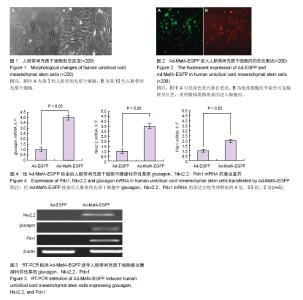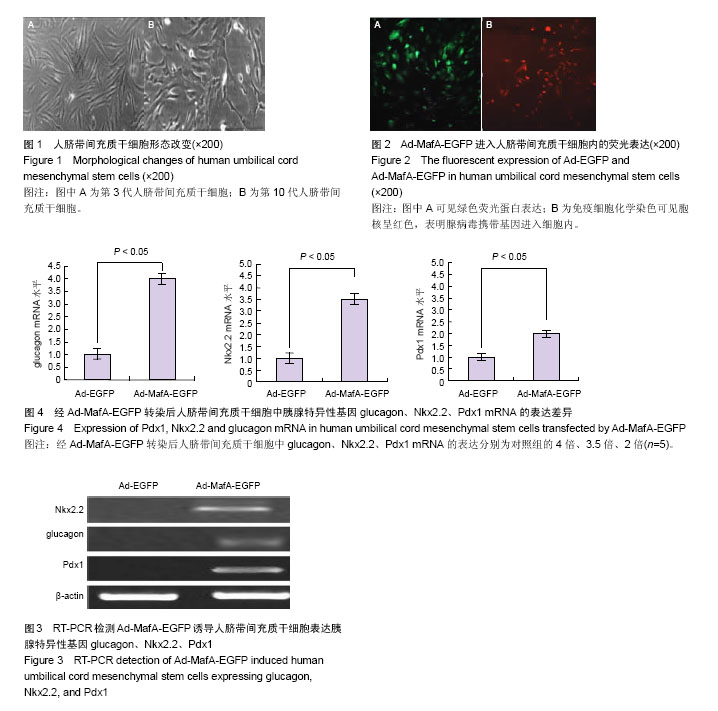| [1] The Diabetes Control and Complications Trial Research Group. The effect of intensive treatment of diabetes on the development and progression of long-term complications in insulin-dependent diabetes mellitus. The Diabetes Control and Complications Trial Research Group. N Engl J Med. 1993; 329(14):977-986. [2] Fullerton B, Siebenhofer A, Jeitler K, et al. Short-acting insulin analogues versus regular human insulin for adults with type 1 diabetes mellitus. Cochrane Database Syst Rev. 2016;(6): CD012161. [3] Shapiro AM, Pokrywczynska M, Ricordi C.Clinical pancreatic islet transplantation.Nat Rev Endocrinol. 2016 Nov 11. [Epub ahead of print][4] Lilly MA, Davis MF, Fabie JE, et al. Current stem cell based therapies in diabetes. Am J Stem Cells. 2016;5(3):87-98.[5] Stanko P, Kaiserova K, Altanerova V, et al. Comparison of human mesenchymal stem cells derived from dental pulp, bone marrow, adipose tissue, and umbilical cord tissue by gene expression. Biomed Pap Med Fac Univ Palacky Olomouc Czech Repub. 2014;158(3):373-377.[6] Sakamoto T, Ono H, Saito Y. Electron microscopic histochemical studies on the localization of hyaluronic acid in Wharton's jelly of the human umbilical cord. Nihon Sanka Fujinka Gakkai Zasshi. 1996;48(7):501-507.[7] Marupanthorn K, Tantrawatpan C, Tantikanlayaporn D, et al. The Effects of TNF-α on Osteogenic Differentiation of Umbilical Cord Derived Mesenchymal Stem Cells. J Med Assoc Thai. 2015;98 Suppl 3:S34-40.[8] Zhao Q, Ren H, Li X, et al. Differentiation of human umbilical cord mesenchymal stromal cells into low immunogenic hepatocyte-like cells. Cytotherapy. 2009;11(4):414-426.[9] Amidi F, Ataie Nejad N, Agha Hoseini M, et al. In vitro differentiation process of human Wharton's jelly mesenchymal stem cells to male germ cells in the presence of gonadal and non-gonadal conditioned media with retinoic acid. In Vitro Cell Dev Biol Anim. 2015;51(10):1093-1101.[10] Wang HW, Lin LM, He HY, et al. Human umbilical cord mesenchymal stem cells derived from Wharton's jelly differentiate into insulin-producing cells in vitro. Chin Med J (Engl). 2011;124(10):1534-1539.[11] Wang H, Brun T, Kataoka K, et al. MAFA controls genes implicated in insulin biosynthesis and secretion. Diabetologia. 2007;50(2):348-358.[12] Hang Y, Yamamoto T, Benninger RK, et al. The MafA transcription factor becomes essential to islet β-cells soon after birth. Diabetes. 2014;63(6):1994-2005.[13] Matsuoka TA, Artner I, Henderson E, et al. The MafA transcription factor appears to be responsible for tissue-specific expression of insulin. Proc Natl Acad Sci U S A. 2004;101(9):2930-2933.[14] Nishimura W, Takahashi S, Yasuda K. MafA is critical for maintenance of the mature beta cell phenotype in mice. Diabetologia. 2015;58(3):566-574.[15] Al Madhoun A, Ali H, AlKandari S, et al. Defined three-dimensional culture conditions mediate efficient induction of definitive endoderm lineage from human umbilical cord Wharton's jelly mesenchymal stem cells. Stem Cell Res Ther. 2016;7(1):165.[16] Sahraneshin Samani F, Ebrahimi M, Zandieh T, et al. In Vitro Differentiation of Human Umbilical Cord Blood CD133(+)Cells into Insulin Producing Cells in Co-Culture with Rat Pancreatic Mesenchymal Stem Cells. Cell J. 2015;17(2):211-220.[17] He D, Wang J, Gao Y, et al. Differentiation of PDX1 gene-modified human umbilical cord mesenchymal stem cells into insulin-producing cells in vitro. Int J Mol Med. 2011;28(6): 1019-1024.[18] Wang H, Qiu X, Ni P, et al. Immunological characteristics of human umbilical cord mesenchymal stem cells and the therapeutic effects of their transplantion on hyperglycemia in diabetic rats. Int J Mol Med. 2014;33(2):263-270.[19] Pileggi A. Mesenchymal stem cells for the treatment of diabetes. Diabetes. 2012;61(6):1355-1356.[20] Weiss ML, Medicetty S, Bledsoe AR, et al. Human umbilical cord matrix stem cells: preliminary characterization and effect of transplantation in a rodent model of Parkinson's disease. Stem Cells. 2006;24(3):781-792.[21] McMahon JM, Conroy S, Lyons M, et al. Gene transfer into rat mesenchymal stem cells: a comparative study of viral and nonviral vectors. Stem Cells Dev. 2006;15(1):87-96.[22] Brokhman I, Pomp O, Fishman L, et al. Genetic modification of human embryonic stem cells with adenoviral vectors: differences of infectability between lines and correlation of infectability with expression of the coxsackie and adenovirus receptor. Stem Cells Dev. 2009;18(3):447-456.[23] Wang H, Brun T, Kataoka K, et al. MAFA controls genes implicated in insulin biosynthesis and secretion. Diabetologia. 2007;50(2):348-358.[24] Nishimura W, Bonner-Weir S, Sharma A. et al. Expression of MafA in pancreatic progenitors is detrimental for pancreatic development. Dev Biol. 2009;333(1):108-120.[25] Habener JF, Kemp DM, Thomas MK. Minireview: transcriptional regulation in pancreatic development. Endocrinology. 2005;146(3):1025-1034.[26] Matsuoka TA, Kaneto H, Stein R, et al. MafA regulates expression of genes important to islet beta-cell function. Mol Endocrinol. 2007;21(11):2764-2774.[27] Han SI, Yasuda K, Kataoka K.ATF2 interacts with beta-cell-enriched transcription factors, MafA, Pdx1, and beta2, and activates insulin gene transcription. J Biol Chem. 2011;286(12):10449-10456.[28] Artner I, Le Lay J, Hang Y, et al. MafB: an activator of the glucagon gene expressed in developing islet alpha- and beta-cells. Diabetes. 2006;55(2):297-304.[29] Sui J, Mehta M, Shi B, et al. Directed differentiation of embryonic stem cells allows exploration of novel transcription factor genes for pancreas development. Stem Cell Rev. 2012; 8(3):803-812. |

